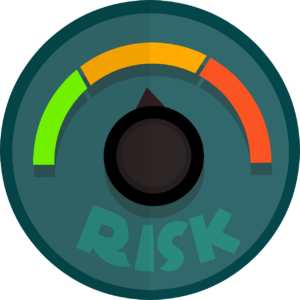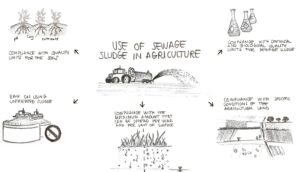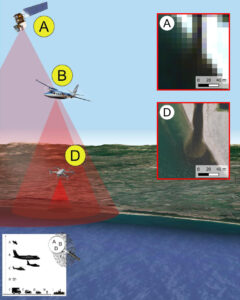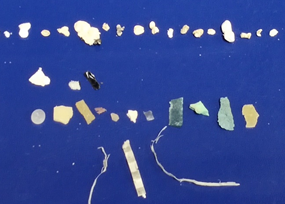managed by:
George VARGHESE, NIT Calicut, Kozhikode (IN) / contact: gkv@nitc.ac.in
Maria PETTERSSON, Luleå University of Technology (SE) / contact: maria.pettersson@ltu.se
Christian ZAFIU, BOKU Wien (AT) / contact: christian.zafiu@boku.ac.at
Published columns |
|
|---|---|
 | RISK ANALYSIS AND LIFE CYCLE ASSESSMENT IN ENVIRONMENTAL FORENSICS: PRACTICAL INSTRUCTIONS FOR THEIR USE PLANTS "In the environmental field, we are often faced with problems that are so complex that it is necessary to find methodologies which combine the available information in a manner which allows for effective, logical, transparent and reproducible interpretation which could be qualitative or quantitative." Download full text |
 | THE ROLE OF THE PRECAUTIONARY PRINCIPLE IN THE AGRICULTURAL REUSE OF SEWAGE SLUDGE FROM URBAN WASTEWATER TREATMENT PLANTS "Society is constantly striving to achieve a high enough level of protection for human health and the environment, including animal and plant health (COM, 2000). In most cases, policies making it possible to achieve this high level of protection can be determined on a satisfactory and acceptable scientific and technical basis." Download full text |
 | TREMOTE SENSING TECHNOLOGY FOR ENVIRONMENTAL FORENSIC "Remote sensing, in its broad sense, involves acquiring information from a distance. But, in practice, it often refers to the ‘process of detecting and monitoring the physical characteristics of an area by measuring its reflected and emitted radiation at a distance, typically from satellite or aircraft using specially designed sensors’ (USGS). The sensors are either passive or active. Passive sensors record the natural energy reflected or emitted from a surface. " |
 | TOTAL PETROLEUM HYDROCARBON: A CONTROVERSIAL MACRO-PARAMETER IN ENVIRONMENTAL FORENSIC "In environmental forensic practice, values measured for chemical parameters, such as chemical concentration in a specific matrix (soil, wastewater, air, waste), are crucial for the assessment of possibly occurred pollution. If these values exceed regulatory limits and if it can be demonstrated that they are the result of a deliberate release from anthropic activities, an environmental crime can be supposed." Download full text |
 | ANALYSIS OF MICROPLASTICS FOR ENVIRONMENTAL FORENSIC APPLICATIONS "The knowledge that microplastics (defined as plastics smaller than 5mm in size), a pollutant of emerging concern, can pose significant challenges to the ecosystem and human health due to its ubiquitous and persistent nature, calls for urgent measures for its control." Download full text |
 | SAMPLING MICROPLASTICS FOR ENVIRONMENTAL FORENSIC APPLICATIONS "Environmental forensics involves the investigation of a diverse range of pollutants that have been accidentally or deliberately released into the environment, to understand their origin and aid the courts in attributing responsibility. For decades, pollutants such as oil and heavy metals, have been the focus of investigation. More recently, emerging pollutants such as plastic waste have become of interest to environmental forensic scientists (Aswini and Varghese, 2020). Plastics have revolutionised our daily lives and have provided significant benefits for many industries; however, although the societal benefits have been immense; there is no doubt that plastic has developed into a considerable environmental problem..." |
 | ENVIRONMENTAL CRIME SCENE ANALYSIS "Although environmental crimes include several typologies (illegal emission or discharge of substances into the environment, ..., ... illegal transport, shipment or dumping of waste, etc.), the most common is the illegal discharge of pollutants to the environment." Download full text |
 | ENVIRONMENTAL FORENSICS: THE WHAT? WHEN? WHERE? WHY? AND HOW? "The term “environmental forensics” has been in explicit use in scientific literature since 1994. McGee and Block (1994) discussed the failure of environmental forensics to emerge as a discipline" Download full text |


